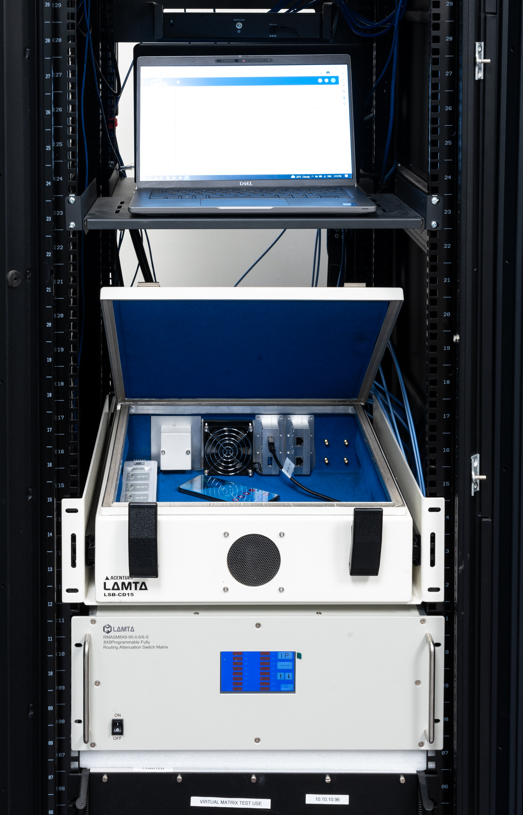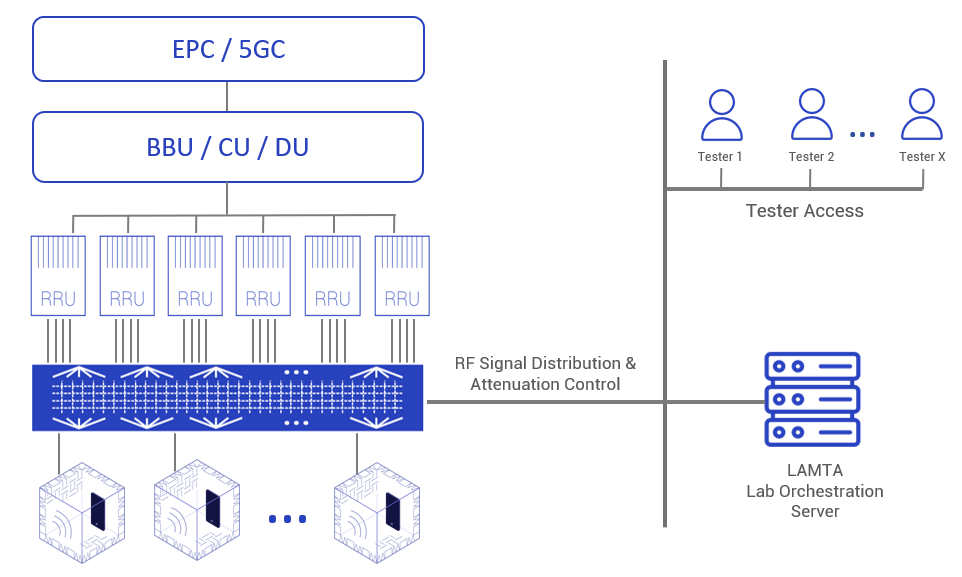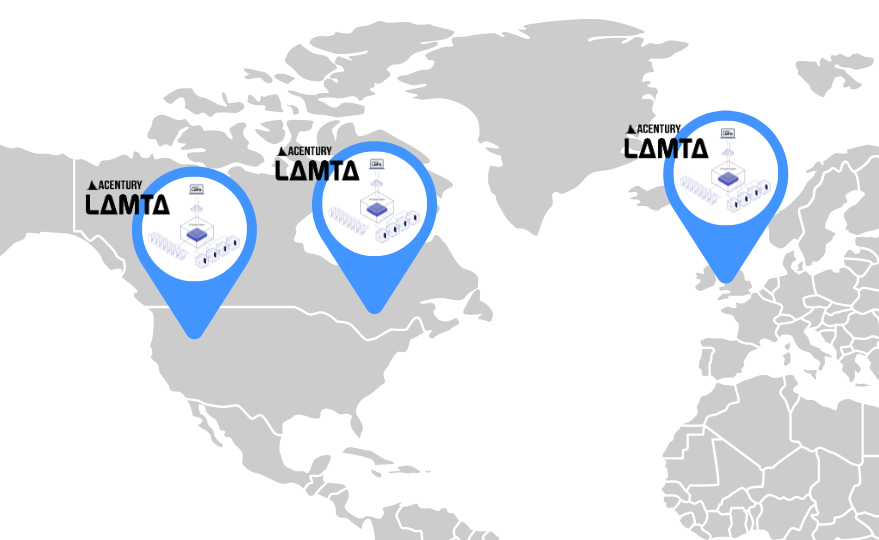How to Scale RF testing to a Multi-site and Multi-city Operation
RF testing operates at many different scales.
Some testing is independent and can be performed at a single test bench. Often, an RF lab can have many independent test benches all working in parallel. These are typically testing specific parts of an overall system or solution. Equipment for such a setup likely includes:
-
an RF signal source or sources
-
an RF isolation chamber
-
some form of RF signal attenuation / control hardware

In contrast, some RF testing requires a much larger test setup. These tests may involve an entire end-to-end system or network. As such, it is typically more complex. Each test station requires access to all elements of that system or network, or a captive version of it. Operating a larger lab such as this requires that all network elements be properly configured for each test.
Some of these larger labs may even span multiple rooms or buildings. In some cases, they may even involve sites in multiple cities. These scenarios present a considerable challenge for lab operations, specifically for test orchestration. Setting up and managing tests that span multiple sites can be very labour intensive if the right tools are not available.
LAMTA to the rescue
Acentury LAMTA is an orchestration solution designed specifically for RF lab operations. Its primary purpose is to streamline test setup and lab configuration activities. LAMTA can manage the following lab elements:
-
RF signal distribution and attenuation equipment (such as arrays, matrices and switches) from multiple different suppliers
-
Android user equipment (i.e. smartphones)
-
Network elements via TR-069
-
RF scanners
-
Any other lab equipment with an open API

LAMTA can control this equipment locally, or over an Ethernet connection from a central location. In this way, LAMTA provides a unified interface for both managing and controlling equipment from different suppliers. Furthermore, this equipment can be co-located with the LAMTA server or in another room or city entirely. LAMTA users can operator the system via browser from any location with access to that Ethernet network.
In the example shown below, a single LAMTA server is used to manage and operate equipment in RF labs in three different cities across a shared corporate internal network. It’s a simple and cost-effective way to provide a common control solution for multiple vendors in multiple locations.

LAMTA scales to fit your needs
Some RF testing needs are quite modest, while others require significant resources. LAMTA can fit any RF lab needs, from controlling a variable attenuator on a single desk to managing a complex lab spanning multiple locations.
To learn more about our LAMTA product, click here.
Related Articles
Application Note: Handover Testing Made Simple
How to Use Software Control to Automate RAN Testing for Advanced Mobility Scenarios and Log Analysis
Part 2: How CI/CD methodologies can be applied to 5G RAN Testing and Deployment
Have a question or comment?
We'd love to hear it. Fill out our General Inquiry Form or reach us directly at: info@acentury.co
CONTACT US